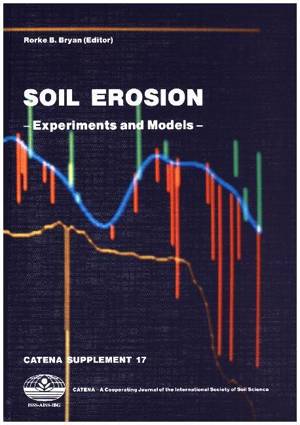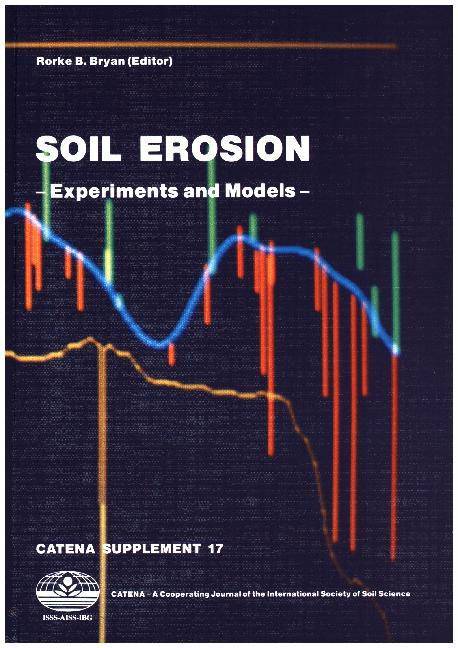
- Retrait gratuit dans votre magasin Club
- 7.000.000 titres dans notre catalogue
- Payer en toute sécurité
- Toujours un magasin près de chez vous
- Retrait gratuit dans votre magasin Club
- 7.000.0000 titres dans notre catalogue
- Payer en toute sécurité
- Toujours un magasin près de chez vous
69,95 €
+ 139 points
Description
The papers contained in this volume were amongst those presented to a conference on The role of laboratory and field experiments in soil erosion research and modelling of hillslope development held at the Scarborough Campus of the University of Toronto in April, 1989. The conference was held in association with the formal opening of a new Soil Erosion Laboratory at the campus. The conference was intended to draw together people active in soil erosion and hillslope geomorphic research to examine recent progress and to discuss priorities and approaches for future research. While many active researchers were inevitably unable to attend, the conference did attract representatives from more than a dozen countries and many different disciplines. The papers presented a good cross-section of different approaches to soil erosion and hillslope research, including field monitoring, field and laboratory experiments and theoretical modelling, and touched on almost all the topics of current importance, with examples from many different environments. Traditional, long-established methods of soil erosion research were reflected by Fullen s1 study of erosional trends on agricultural soils in central England using monitored, instrumented erosion plots under natural rainfall. Dunne1, on the other hand, carried out a detailed study of rill-interrill process on experimental field plots under simulated rainfall and applied the results in a model of long-term slope evolution in the southern Kenyan grasslands. These experiments demonstrated the critical role of vegetation in the hydrological and hydraulic response of semi-arid hillslopes. This was also reflected by large-scale simulated rainfall experiments carried out on rocky hillslopes at Walnut Gulch, Arizona, by Abrahams, Parsons & Luk. The studies by Dunne and by Abrahams et al. both focussed closely on hydraulic conditions in shallow overland flow under intense rainfall, and this topic was returned to in a number of experimental laboratory studies using simulated rainfall. Kinnell studied the interaction of rainfall intensity, flow depth and flow velocity on sediment entrainment in a small laboratory flume, while Guy & Dickinson used rather similar methodology in demonstrating the difficulty of accurate predictions of hydraulic thresholds for sediment entrainment using the Shields criterion. Torri, Biancalani & Poesen also found problems in using the Shields criterion for shallow overland flow, particularly in the situation where coarse gravels rest on steep, cohesive rill beds of much finer texture. In an examination of conditions for the incipient movement of rock fragments, they used empirical results from small flume experiments to test a model by NADEN (1987) which examines incipient gravel instability in terms of average flow velocity and turbulent velocity fluctuations. Apart from focussing on the Shields criterion, Guy & Dickinson also emphasized the importance of accurate assessment of relative roughness for prediction of sediment entrainment in shallow flows. This problem was also addressed in papers by Govers1 and Rauws which reported experimental laboratory studies from Leuven and Caen. BRYAN also examined critical hydraulic thresholds in a study of rill initiation, headcut and knickpoint development in a large laboratory flume under simulated rainfall, and provided further information on the processes of cyclic rilling and colluviation described by Bryan & Poesen (1989). De Ploey examined the problem of knickpoint and headcut development at field scale in a study of thalweg gullying on loess soils in Europe, which further developed some of the theoretical concepts first presented in a theoretical model of headcut retreat by De Ploey (1989). The papers which examined patterns and processes of erosion in a framework of shallow flow hydraulics were paralleled by a series of papers which examined time-dependant variations in soil resistance t
Spécifications
Parties prenantes
- Editeur:
Contenu
- Nombre de pages :
- 208
- Langue:
- Anglais
- Collection :
- Tome:
- n° 17
Caractéristiques
- EAN:
- 9783510653584
- Format:
- Livre relié
- Dimensions :
- 170 mm x 240 mm
- Poids :
- 650 g

Les avis
Nous publions uniquement les avis qui respectent les conditions requises. Consultez nos conditions pour les avis.





